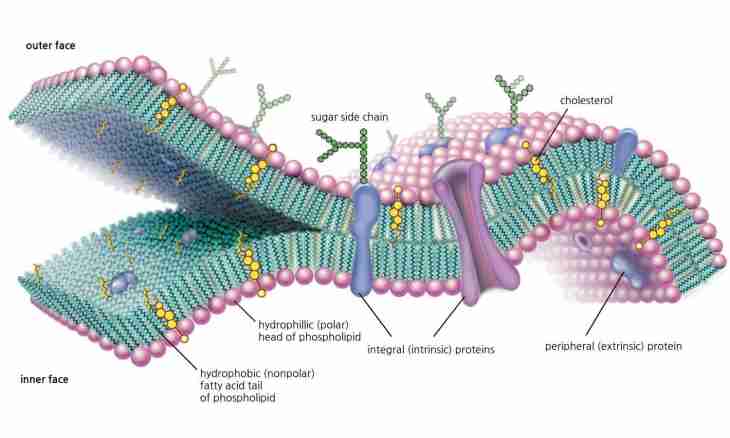Structure of the cells of all eukaryotic organisms has many common features, however during evolution each kingdom made the components the most adapted for the way of life. Therefore cages of mushrooms have a number of the features distinguishing them from cages of animals and plants.
Structure of a cellular wall
Cages of mushrooms, as well as cages of plants, are surrounded outside with a strong cellular wall which keeps shape of a cage and protects it from damages. At the majority of mushrooms the cellular wall consists of chitin – substance which also forms an exoskeleton at insects, and only at oomitset the main substance is cellulose. Outside on walls of some mushrooms melanin pigment molecules are located. Also as a part of a cellular wall there are lipids, proteins and polyphosphates.
At vegetative cages of some lowest mushrooms the cellular wall can be absent.
Cytoplasm and organelles
In a cage of a mushroom there are organelles and cytoplasm. Hereditary material is stored in a kernel and also in mitochondrions, and kernels in a mushroom cage can be as one, and a little. If to consider kernels of representatives of family of mushrooms is more detailed, it is possible to find out that this kingdom is intermediate between plants and bacteria: their DNA is twice less, than at a plant cell, but is larger, than at bacteria. From other organelles at mushroom cages there are mitochondrions participating in oxidation of organic compounds and release of molecules of energy, Golgi's device participating in transport of proteins, formation of glycolipids, glikozaminglikan, a proteoliza of proteins and sulphation of proteinaceous and carbohydrate connections. Participates in transport and accumulation of products of synthesis also endoplasmic retikulum. Also at mushroom cages there are ribosomes occupied in synthesis of protein from amino acids and interacting with RNA by means of special sites websites. As well as in animal cages, the main reserved substance of mushrooms is the glycogen. In mushrooms it is possible to find also the reserved drops of lipids.
Some mushrooms in a cage have one or several small a vacuole where nutrients are laid.
Between the cytoplasm surrounded with a cytoplasmatic membrane, and a cellular wall there are lomasoma – the structures which are externally reminding small bubbles. Their appointment is not found out yet, however scientists assume that lomasoma take part in formation of a cellular wall. The vast majority of cages of mushrooms has no structures providing them ability to move. However organellas of the movement are necessary for the cages participating in reproduction. Gametes and zoodisputes have smooth, plumose or bichevidny zhgutik.

